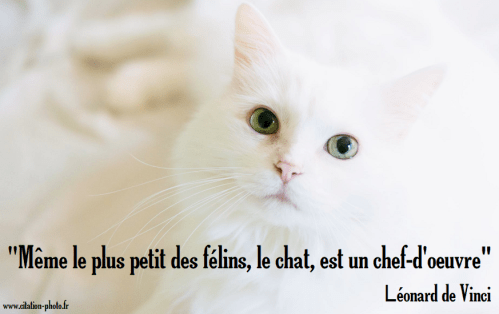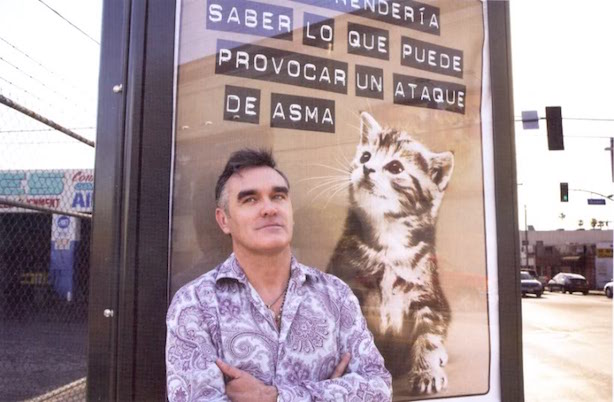Post-Performative Post-Scriptum…
pard, n.¹ A panther, a leopard; (also) an animal resembling these. Now archaic.
pard, n.² A partner, esp. a male partner; a comrade, a mate.
• Oxford English Dictionary

Post-Performative Post-Scriptum…
pard, n.¹ A panther, a leopard; (also) an animal resembling these. Now archaic.
pard, n.² A partner, esp. a male partner; a comrade, a mate.
• Oxford English Dictionary

The Turkish shorthair cat Gli in the Hagia Sophia, Istanbul (viâ Cats in Islam)
“The basic fascination I have with cats is nothing unusual. I find them very intelligent and very superior. And I feel entranced by them. If I see one in the street I feel immediately drawn to the cat. I have a friend, Chrissie Hynde [the singer with The Pretenders], she’s exactly the same. You can be walking with her along the street, she sees a cat, she walks away. You continue to walk on, talking to no one. You look around and she’s crouched down with a cat in a hedge. I’m exactly the same way. I’m fascinated by them.” — “Morrissey on… privacy, the Queen and The Smiths”, The Daily Telegraph, 17vi11
Cats divide inanimate objects into two great classes:
1. Things they are frightened of.
2. Things they can climb inside.
From How it Works: The Cat (Ladybirds for Grown-Ups 2016)
« Les chats furent créés dans notre monde pour réfuter le dogme que toutes choses furent créées pour servir l’Homme. » — Froquevielle
• “Cats were created in our world to refute the dogma that everything was created to serve mankind.”
Post-Performative Post-Scriptum
I can’t find any more details of “Froquevielle”, which may be a misspelling.
« Tous les chats sont mortels, Socrate est mortel, donc Socrate est un chat. » — Rhinocéros (1959) par Eugène Ionesco (1931-94)
• “All cats are mortal, Socrates is mortal, therefore Socrates is a cat.”
I first came across this quote about cats in French:
« Le plus petit des félins est une œuvre d’art. »
• “The smallest of felines is a work of art.”
It’s widely attributed to Leonardo da Vinci, but I can’t find any proof that he ever said it. Here it is in a fuller Italian version:
« Anche il più piccolo dei felini, il gatto, è un capolavoro. »
• Même le plus petit des félins, le chat, est un chef-d’œuvre.
•• Even the smallest of felines, the cat, is a masterpiece.
It’s a good quote, wherever it comes from. But the attribution to Leonardo reminds of another saying in Italian: Se non è vero, è ben trovato — “If it’s not true, it’s a happy invention.”

(From Pinterest)

Leonardo’s Étude du mouvement des chats

Weiße Katzen beobachten Goldfische / White Cats Watching Goldfish, Arthur Heyer (1872-1931)

The Spanish text on the poster, …rendería saber lo que puede provocar un ataque de asma, says something like “…would [le]arn to know what can provoke an attack of asthma”.
Previously pre-posted
• Moz Mit Mog #1
Basque is one. Etruscan is another. Sumerian is a third.
What are they? Well, they’re all languages, but they’re more than that. John Donne said that no man is an island, entire of itself. That isn’t true of languages. Basque, Etruscan and Sumerian are all what might be called language-islands, entire of themselves and unrelated to any other language in the world, alive or dead.
I find that a powerful idea in all sorts of ways. Living or dead, language isolates (as linguists call them) are weird and wonderful things. But in some ways they’re at their weirdest and most wonderful when they’re poised between life and death. Many people down the millennia have been the last living speaker of a once widely spoken language. Often that language will still have had far-thrown and flourishing relatives, so its imminent death won’t throw all its treasures of phonology and syntax and lexicon into oblivion.
But sometimes the last living speaker will be of a language isolate. And when the speaker dies, an entire linguistic world will die with them. That kind of tragedy reminds me of one of Clark Ashton Smith’s most memorable and moving stories: the brief but brain-ballistic “Sadastor”. It’s the weird tale of a huge planet “far-fissured with enormous chasms, and covered from pole to pole with the never-ebbing tides of the desert sand.” The planet is called Sadastor and is “without moon or satellite, an abomination and a token of doom to fairer and younger worlds.” I won’t describe what the demon Charnadis discovers on Sadastor, because you should read the story for yourself if you haven’t already.
If you do read it, or you already know it, you’ll understand why it reminds me of the last living speaker of a language isolate. And here is such a speaker and such a language:
Gyani Maiya Sen, a 75-year-old woman from western Nepal, can perhaps be forgiven for feeling that the weight of the world rests on her shoulders. She is the only person still alive in Nepal who fluently speaks the Kusunda language. The unknown origins and mysterious sentence structures of Kusunda have long baffled linguists.
As such, she has become a star attraction for campaigners eager to preserve her dying tongue. Madhav Prasad Pokharel, a professor of linguistics at Nepal’s Tribhuwan University, has spent a decade researching the vanishing Kusunda tribe.
Professor Pokharel describes Kusunda as a “language isolate”, not related to any common language of the world. “There are about 20 language families in the world,” he said, “among them are the Indo-European, Sino-Tibetan and Austro-Asiatic group of languages.
“Kusunda stands out because it is not phonologically, morphologically, syntactically and lexically related to any other languages of the world.” – Nepal’s mystery language on the verge of extinction, BBC News, 13v12
Wikitionary has a word-list for Kusunda and I looked there for something that also reminds me of a language-isolate. What do you call one of the most beautiful, mysterious and solitary animals in the world? In Kusunda, you call it myaqo getse. And what does that mean? Well, in English it means “cat”. But in Kusunda itself it means “leopard-child”, from myaq or myaχ, “leopard”, and getse, “offspring, child.” So I suppose you could also translate myaqo getse as “leopardling”.

Panthera pardus fuscus, the Indian Leopard
And I’ve chosen to try and express the theme of this blog-post in Italian as isolingatto, a portmanteau of isola, “island”, lingua, “language”, and gatto, “cat”. But isolingatto could almost be the past participle of the verb isolingare, meaning “to speak in a language isolate”. That is, isolingatto could mean “spoken in a language isolate” or “spoken from a language-island”.